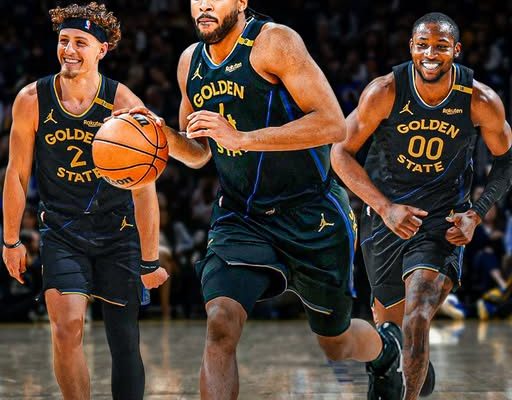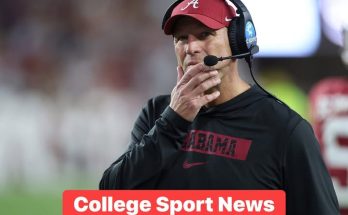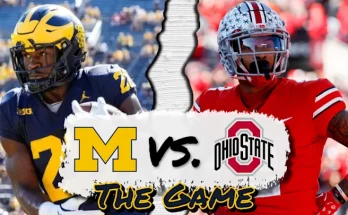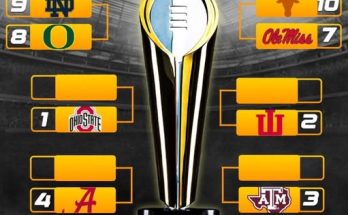The Golden State Warriors entered the 2024–25 NBA season with renewed optimism and a refreshed roster, but their campaign ultimately ended in disappointment. After a roller-coaster regular season filled with highs and lows, the Warriors clawed their way into the playoffs, securing a respectable seed in the competitive Western Conference. Much of their success was attributed to the continued brilliance of Stephen Curry, who once again defied age and expectations to lead his team. But when the postseason arrived, the dream of another championship run came crashing down—not because of a lack of talent or effort, but because they had to embark on that crucial journey without their most trusted compass.
Curry’s injury, sustained in the closing weeks of the regular season, was a crushing blow to a team whose identity and rhythm revolves around him. It was a lower leg injury—one that didn’t appear catastrophic at first but worsened over time and ultimately sidelined him for the rest of the postseason. Warriors fans were left hoping for a miracle, but the medical updates were never encouraging. Without Steph’s floor-spacing, leadership, and clutch shooting, the Warriors became a different team—a team that struggled to generate offense and lacked the gravitational pull that Curry brings on every possession. And although other stars like Klay Thompson, Draymond Green, and the newly integrated Jimmy Butler stepped up in significant ways, the collective effort wasn’t enough to overcome the young, surging Minnesota Timberwolves in the second round of the playoffs.
The Timberwolves, led by Anthony Edwards and Karl-Anthony Towns, had evolved into one of the league’s most dangerous units. They combined youth and athleticism with a newfound maturity and discipline that had often eluded them in previous seasons. Against the Warriors, they smelled vulnerability and took full advantage. The series was physical, emotionally charged, and tightly contested, but Minnesota had more answers. Golden State simply lacked that extra gear—something that Curry had provided time and again in years past. In his absence, the Warriors struggled with offensive stagnation. Their signature motion offense, which thrives on quick passes and off-ball movement, lost its heartbeat. Defenses were able to load up on Thompson and Butler, while Green’s playmaking became easier to read and predict. The spacing was off. The pace slowed. And the Warriors found themselves fighting uphill in every game.
Klay Thompson had his moments. He turned back the clock in Game 3, dropping 34 points and giving the Chase Center faithful a glimpse of the vintage Splash Brother magic. But without Curry, there was no Splash to complement the flash. Jimmy Butler, whose acquisition had brought both excitement and skepticism, played with grit and determination, showing flashes of his Miami Heat-era tenacity. But even Butler, as effective as he was on both ends of the court, couldn’t replicate Curry’s late-game heroics or his sheer ability to bend defenses. Draymond Green remained the emotional and defensive anchor, doing his best to keep the team mentally engaged, but without Curry to set the tone, the Warriors often looked disjointed.
This wasn’t just about missing one player—it was about missing the player who defined the system. Curry’s absence altered every element of Steve Kerr’s game plan. Role players like Jonathan Kuminga, Moses Moody, and Gary Payton II were thrust into larger roles, but none could consistently shoulder the scoring burden. The team’s offensive rating plummeted, and turnovers became a persistent issue. Minnesota, on the other hand, capitalized on every mistake, turning defense into offense and asserting their physical dominance in the paint.
The Game 6 loss at the Target Center was a microcosm of the entire series. The Warriors played hard, made runs, and even took a double-digit lead in the second quarter. But as the game wore on, their offense bogged down, and the Timberwolves slowly chipped away. Edwards exploded for 38 points, torching multiple defenders and making big play after big play. Towns controlled the glass and stretched the floor, and Jaden McDaniels locked in defensively. The Warriors had no answers. Kerr tried everything—from small-ball lineups to a double-big look—but nothing clicked consistently. When the final buzzer sounded, the Timberwolves had punched their ticket to the Western Conference Finals, and the Warriors were left wondering what could have been.
After the loss, the postgame press conference was somber. Steve Kerr shouldered much of the responsibility, acknowledging the difficulty of trying to compete without his star point guard. He praised the team’s fight and heart, but also admitted that the system depends heavily on Curry’s presence. Klay Thompson was visibly emotional, reflecting on the reality that each playoff run could be his last with this current core. Draymond Green, ever candid, said it plainly: “We weren’t ourselves without Steph. It’s that simple.”
The front office now faces a pivotal offseason. Curry will return, but the team has to reckon with his age and durability. At 37, he remains elite, but time is catching up. Can he be expected to carry this level of burden moving forward? And what of Thompson, whose contract expires this offseason? Will the Warriors bring him back, or will they opt to reshape the roster around Curry and younger talent? Jimmy Butler’s fit has been a topic of debate, and while his competitive fire was appreciated, questions remain about how well he meshes in the Warriors’ system long-term.
Another layer to this disappointment is the growing strength of the Western Conference. With teams like Minnesota, Oklahoma City, and Sacramento ascending, the path to contention grows steeper. The Warriors have always prided themselves on continuity, chemistry, and culture—but those traits alone may no longer be enough. They’ll need to evaluate whether a significant roster shakeup is necessary, or whether a fully healthy Curry can still drive this team deep into the playoffs.
Despite the pain of defeat, there’s still admiration for what the Warriors accomplished. Many franchises would crumble without their franchise player. Golden State, to its credit, fought valiantly. They eliminated the Dallas Mavericks in the first round, outmaneuvering Luka Dončić in a thrilling six-game series. They played every game with pride, grit, and belief. But belief without execution can only take you so far. The NBA is unforgiving. Margin for error is razor thin. And without Curry, the Warriors were always skating on that edge.
Warriors fans, spoiled by a decade of success, now find themselves in unfamiliar territory. They’re not just asking “Can we win the title?” but “Is the window still open?” For a franchise that won four championships in the span of eight seasons, the standard is high. Mediocrity isn’t acceptable. Yet, the reality is clear: even the greatest dynasties eventually face the twilight. And unless a new core can rise or this current one can find new life, the Warriors may be nearing that point.
Still, there’s something about Golden State that refuses to be counted out. If Curry returns next season healthy and hungry, the Warriors can absolutely reassert themselves as contenders. They’ve done it before. They did it in 2022, when no one believed. But to do it again, they’ll need health, cohesion, and perhaps a touch of roster magic.
The offseason will be a time for soul-searching, roster adjustments, and reflection. Steph Curry’s health will dominate the headlines, as will decisions about Thompson’s future and potential trade or free agency targets. But one thing is certain: the Warriors are not content with second-round exits. Their standard, forged in championships and cemented in culture, demands more.
And so, while the 2024–25 season ended with heartbreak and questions, it also sets the stage for what could be one of the most fascinating chapters in Warriors history. Can they rally once more behind their aging but brilliant star? Can the front office retool without dismantling the foundation? Can Steve Kerr adapt and evolve as the league around him changes?
Only time will tell. But if we’ve learned anything from the past decade of Warriors basketball, it’s this—never count them out, especially when Steph Curry is wearing the jersey. This may have been a setback, but it’s not the end. The dynasty may be bruised, but it’s not broken. And when the 2025–26 season tips off, all eyes will be on the Bay Area, waiting to see if the Warriors can rise again.



